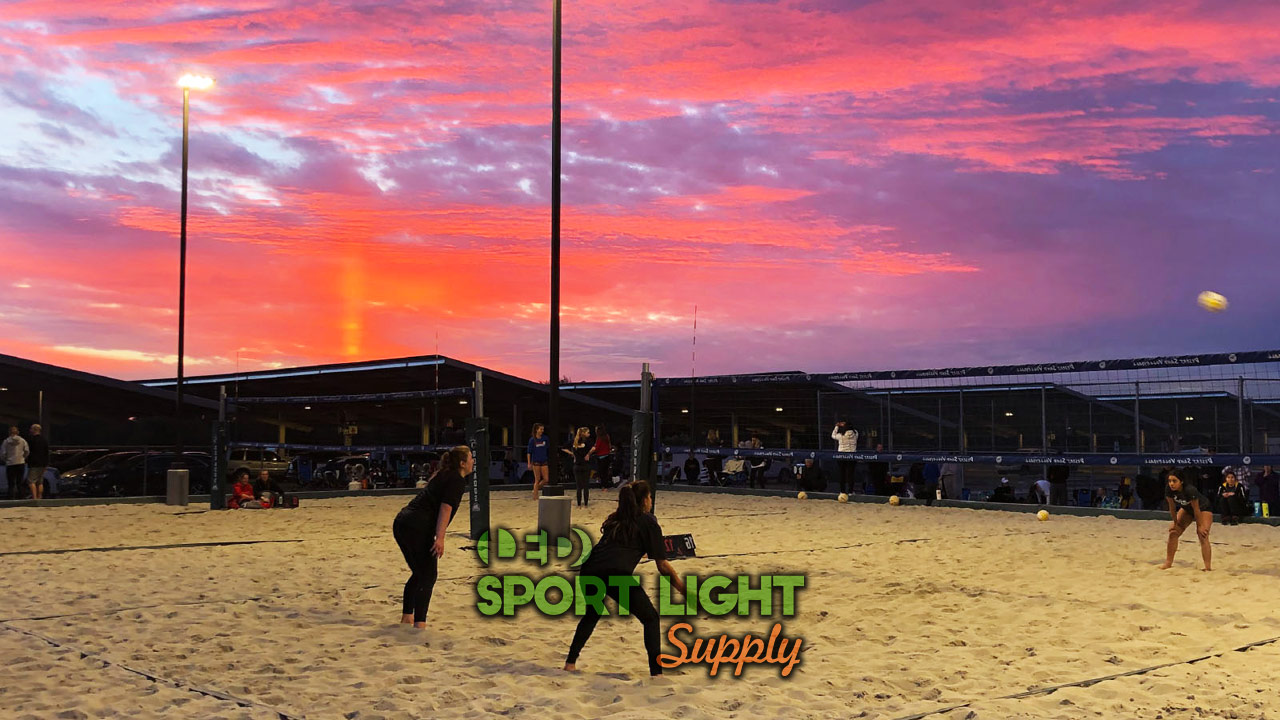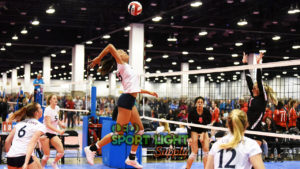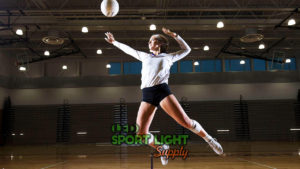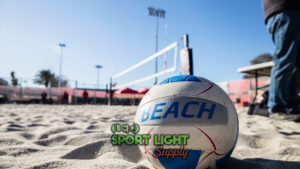The standard 29.6 × 59.1 ft (9 × 18 meters) sand volleyball court might need one to four high masts. In any case, a light pole layout is necessary before starting the excavation. First, a lighting designer calculates the light pole height.
The calculation about how deep to install them follows from there. But before that, the procedure requires another thing. Before preparing the site, the professional must check for underground utilities.
Usually, the depth of a sand volleyball court light pole varies between 2 and 3 ft. You place it at 3 feet deep if drainage is not ideal. Otherwise, with compact soil, a depth of 2 feet should be enough.
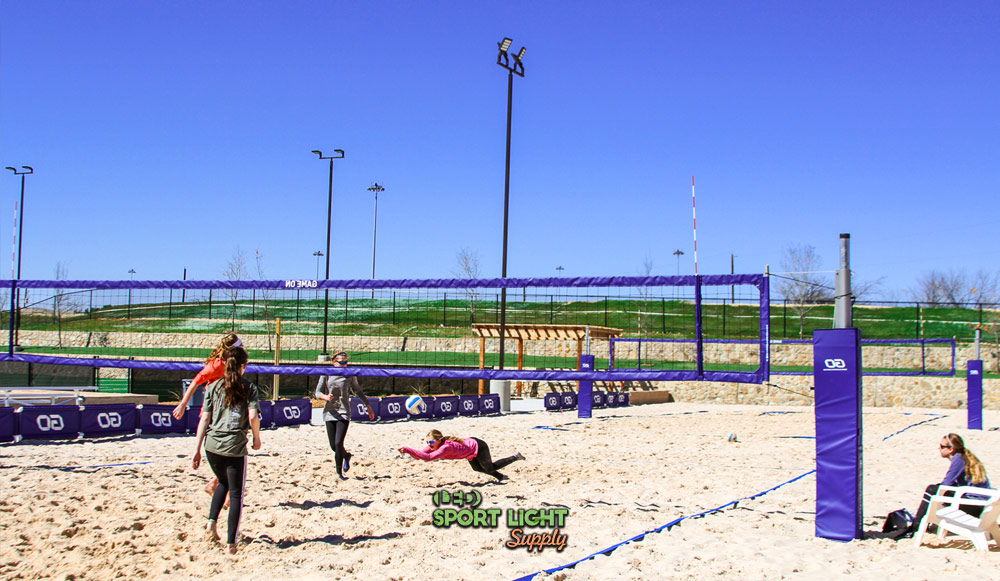
Other factors might come into play as well. For example, the height of the masts is a critical factor. Mostly because the light pole top should exceed the volleyball net in height by 1 or 2 feet at least. Then again, if the owner wants to install solar panels on top of the light poles, higher masts could be necessary. In the latter case, the lighting designer could suggest placing the concrete footing even deeper.
Nonetheless, a light pole height cannot be too close to the net height because the light fixtures could cause glare. Imagine trying to spike a free ball at the centerline with light sources at the same level as your head.
Here are the three most discussed factors that influence how deep a sand volleyball court light pole should be placed.
Factors affecting the depth of sand volleyball court light poles
1. Type of sand used in the volleyball court
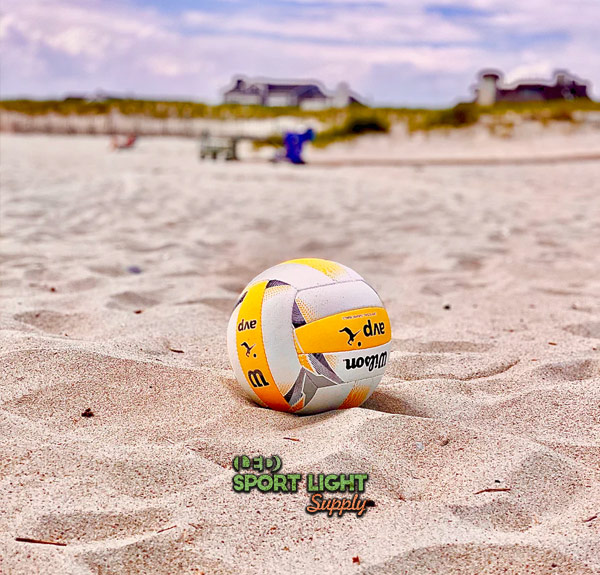 If you set foot in a pro beach volleyball league pitch, you will notice that the volleyball sand is high-quality. After excavating the sand volleyball court, the supplier puts a layer of gravel beneath. Finally, the sand covers all the other layers. But the type of beach volley sand is different from the sand you find in construction sites or golf bunkers.
If you set foot in a pro beach volleyball league pitch, you will notice that the volleyball sand is high-quality. After excavating the sand volleyball court, the supplier puts a layer of gravel beneath. Finally, the sand covers all the other layers. But the type of beach volley sand is different from the sand you find in construction sites or golf bunkers.
Usually, first-class volleyball sand comes from deep inside the mountains. The seller sources and screens the raw product for rock flakes or pebbles. In fact, impurities can cut the volleyball players’ skin. After all, going for a dig on a sand volleyball court means launching yourself into the ground. With the wrong type of sand, players could injure their feet just by standing there.
Often, high-quality sand is made, rounded, and polished from freshwater rivers. But in some locations, natural beach sand works just fine. If the supplier has to use high-quality sand, the light pole could end up in the nearby ground. But if natural beach sand covers the installation area of the light pole, a drainage pipe could be necessary. In this case, the depth of the concrete base serves to ensure no tilting or stability issues.
2. Light pole height
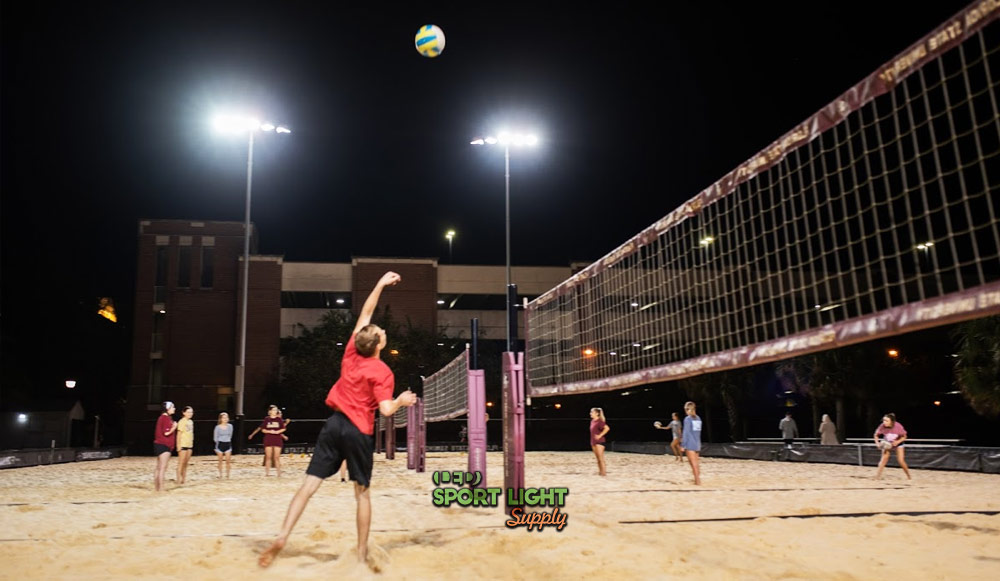
Sometimes, a location might pose potential hazards such as strong gusts of wind. So, we can insert 5 feet into the sand if the overall light pole height is just 10 feet. Or, we could go for a series of layers to allocate the light pole base for a more stable footing. That would include gravel, masonry sand, and artificial turf. The latter could encircle the sand volleyball court as well.
Wind resistance, bending, and tilting might be issues too. In detail, the concrete footing must be installed as deep as necessary. Mainly to avoid any stability issues. For DIY projects, a test for the stability analysis of the light pole is recommendable.
Usually, the light pole height is over 7’11” (for men’s volleyball) to provide an adequate lux level. Since you need 500 lux for a pro beach volley match, the light pole lighting comes with flicker-free LED fixtures as well. In other words, the lighting layout must take into account the broadcasters’ and spectators’ needs. So, the height of the light pole changes accordingly.
Technical standards for the construction of custom projects might also apply. For example, a higher light pole for an indoor sand volleyball court could function as a supporting structure. Or a single circular high mast with circularly oriented projectors could light up more pitches at once.
3. Building foundations
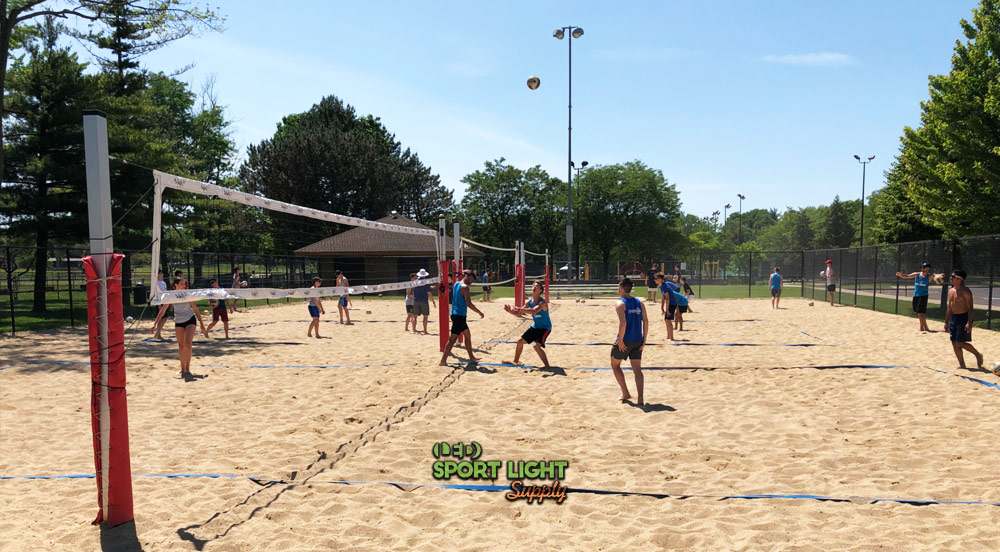
Regardless of its shape and nature, any architectural work is always a synthesis. In detail, an organic and rational one of complex structural elements that make up the internal skeleton and guarantee the stability of the building.
Since the lay of the land can be extremely varied, the foundations of the building could affect the depth for the installation of the light pole. The facility structure can cause deep concerns to a supplier. Or a contractor could question some procedural steps.
The first operation to be carried out lies in a careful analysis of the characteristics of the soil. After that, it is easier to choose the suitable type of foundation to apply at the construction site.
If the sand volleyball court is old, the foundation of the facility might be different from recent ones. Without proper foundations, more tests could be necessary to ensure the best safety conditions. Before players go spike, you could have to resort to minimal construction work.
Even a commercial outdoor sand volleyball center must follow some rules. After all, local clubs could set competitions or events. So, they need to place the light pole deep in the ground by consulting the building foundations. Or by contacting an expert for providing a survey and assessment of vertical deformation of the underground structure.
Why should a sand volleyball light pole have enough depth?
The chief reason has something to do with bad weather. In fact, all sorts of accidents can happen due to a not very deep installation of the light pole. Here are some of the potential causes of problems for which a sand volleyball light pole needs depth:
- typhoon
- hot temperatures
- stability issues
- landslide
- subsidence
- tidal waves
Often, a sand volleyball court is located on the seaside or on a beach. So, while the players speed up to pull off an off-speed hit, the load imbalance and overloads of the light pole should not be a problem. You need the right depth for a safe and secure installation of the lighting system. Both for the volleyball teams, their coaches, and everyone present.

